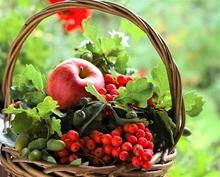
Cucumber (Cucumis sativus L.), known as Khira in Hindi, is a staple vegetable in India, cultivated extensively in both hilly and plain regions. This versatile vegetable is consumed in salads, pickles, rayata, and as a cooked dish. Cucumber is not only favored for its taste but also for its numerous health benefits, including cooling effects, constipation prevention, appetite stimulation, and aiding in jaundice treatment. Economically, it holds significant value, often regarded as a refreshing condiment due to its pleasant taste and low-calorie content. The seed protein of cucumbers matches the nutritional quality of legumes and is used in various Ayurvedic treatments.
In the northern plains of India, farmers typically harvest two cucumber crops annually, during the spring-summer and kharif seasons. Indian consumers generally prefer cucumbers that are long, cylindrical, and medium thick with high yield potential. Among the varieties, Pusa Long Green stands out as a high-yielding option suitable for both spring-summer and kharif seasons.
Development and Characteristics of Pusa Long Green (DC-83)
Pusa Long Green was developed from local material collected in Chhutmalpur, Saharanpur district, Uttar Pradesh. Through a process of selfing and individual plant selection, this variety was refined and developed. The plants exhibit vine lengths of 2.0-2.5 meters with 3-4 branches. The leaves are medium green with lobed margins. The plants are monoecious, featuring solitary female flowers on short peduncles and clusters of male flowers. The fruits are light green with mild whitish-green stripes and brownish-green blotchy patches near the stem end. They measure 15-18 cm in length, are non-hairy, have soft skin, and boast crispy, tender flesh with an average fruit weight of 150-160 grams.
Performance and Yield of Pusa Long Green
From 2015-16 to 2017-18, Pusa Long Green was tested across several centers in India as part of the AICRP (vegetable crops) trials. The results demonstrated that Pusa Long Green yielded 18.93 tons per hectare, 34.93% higher than the check variety, Pant Khira-1. The average fruit length was 18.60 cm, and the average fruit weight was 161.35 grams, indicating superior performance compared to Pant Khira-1.
Cultivation Practices
Pusa Long Green thrives in all soil types but shows a preference for well-drained loam and sandy loam soils rich in organic matter. The recommended seed rate is 1.5-2.0 kg per hectare. Sowing for the spring-summer crop occurs from mid to late February, and for the kharif season, sowing happens at the end of June. Seeds are sown 2 cm deep and spaced 45-60 cm apart on the slopes of channels prepared 2.0-2.5 meters apart. A bower or trellis system is recommended during the kharif season to maximize yield and minimize disease incidence.
Fertilizer and Plant Protection Management
Prior to field preparation, 15-20 tonnes of well-rotted organic manure per hectare should be applied. Additionally, 100 kg of urea, 200 kg of single super phosphate, and 80 kg of muriate of potash should be incorporated during the last plowing. An additional 50 kg of urea should be top-dressed at the 8-10 leaf stage. If crop growth is poor, a 1% urea spray is recommended.
To protect seedlings from damping off and other root-borne diseases, drenching with Ridomil (2 g/litre) and Blitox (3 g/litre) is necessary. For downy mildew and virus control during the kharif season, a need-based spray of Imidachlorpid (0.3 ml/litre) or Acetamiprid (0.3 g/litre) followed by Dimecron (2 ml/litre) every two weeks can prevent damage from aphids and whiteflies.
Harvesting and Seed Production
The first harvest occurs 45-50 days after sowing in the kharif season and 50-55 days in the spring-summer season, with an average yield of 18.93 tons per hectare. For seed production, an isolation distance of 400 meters for certified seed and 800 meters for foundation seed is required. Cucumbers take about 35-40 days to mature from the fruit set, and seeds are extracted from fully mature fruits that exhibit pale yellow to golden yellow or brown rinds. The seeds are washed, dried to a moisture content of 10%, and stored under room temperature or in vapor-proof containers with a moisture content of 6%. The average seed yield is 300-450 kg per hectare.
(Source: D Munshi, T K Behera, Amish K Sureja, J Singh and B S Tomar, Indian Horticulture, May–June 2022, 3-4)













